The Martinez family, after many years, ended up with a dog that weighs roughly 80 to 100 pounds (36 to 45 kilograms), stands twenty-three to twenty-five (23~25") inches or sixty to sixty-five centimeters (60 to 65 cm) at the withers or top of the shoulder. The dog has an extremely muscular build, and is solid white without any other color anywhere on its coat. In fact any other color in the coat is considered a flaw.
Beneath the hair Dogos have light colored skin with pink spots. These spots are randomly distributed over the body and may include the snout or even the tip of the nose.
The coat itself is short; a single layer with no undercoat. Though they shed, it is light compared to other breeds.
The Dogo has a broad head and moderately sort snout. They are slightly longer than they are tall. Females may be slightly longer than a male of equal weight.
The Dogo has been described as looking like an all white version of an American Pit Bull Terrier or American Bull Dog. However the American Bull Dog is a considerably smaller breed and the Dogo breeding line does not contain any Pit Bull Terrier blood at all. The square shaped head is the result of the Boxer and Dogue de Bordeaux lines in the breed.
Medical Concerns
As with many all white breeds the Dogo may be born deaf or suffer hearing loss over time. It is estimated that roughly ten percent (10%) of Dogos are born deaf. However, breeders have found that if they are meticulous about the parental line, ensuring that neither the male or female have a history of deafness in their ancestry, pigment deafness can be avoided.
As with many large breeds the Dogo may also be prone to hip dysplasia.
Temperament
Though Dogos were bred to be big-game hunters, they were also bred get on well with other dogs. After all, a good hunting dog hunts in packs, not as individuals. The dog was bred to corner prey, not take it down. They are therefore "designed" to keep the hunted animal at bey until the human arrives. The bravery bred into the line was required for hunting wild boar and puma which populate the forests and mountainous regions in Argentina.
Despite these work attributes the dog is cheerful, humble, and a friendly breed. He is not a hard barker, and in fact rather quiet for a dog. He is never aggressive with humans. He loves his family, especially children.
Intelligence
It is not known if the Martinez brothers were attempting to create a dog of keen intelligence, but that is exactly what their efforts produced. Not only does the Dogo have strength and stamina, he is also very intelligent. For this reason training is easy as long as you respect the dogs intelligence and avoid resorting to physical punishment. This also means that you must establish yourself as the alpha. This is accomplished by giving the dog rules to live by, what he can and cannot do, with verbal commands. It is also important that the human control access to food. This dog recognizes verbal admonishment readily.
Working Dog
Beside the hunting attributes, Dogos have also been found to be excellent search and rescue dogs, service dogs, as well as military and police dogs.
Home Life
The Argentine Mastiff (another designation for this dog) has been bred specifically for socialization with other dogs. They are therefore quite good in group environments. They get along well with other pets (including cats) and are equally at home in rural and urban settings. For that reason the Dogo can live comfortably as a ranging farm dog, or as an urban dog with a small yard. They can even adjust to cramped apartment living.
Because of the Martinez bothers' efforts to bred out aggressive traits, attacks on humans or other pets are extremely rare.
Life Expectancy
The Dogo has a life expectancy of nine (9) to sixteen (16) years with the average upper limit being fifteen (15) years. As with most large dogs they do not live as long as smaller breeds.


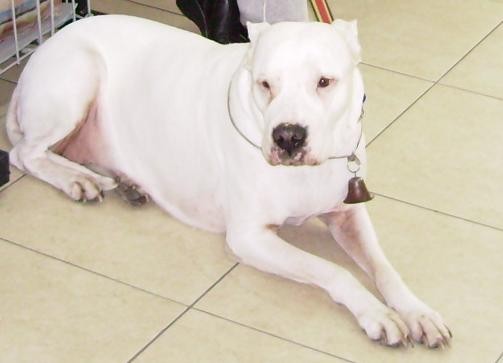
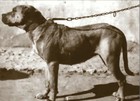
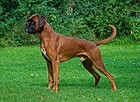
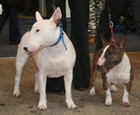
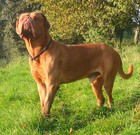

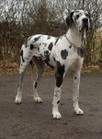

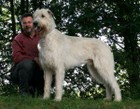

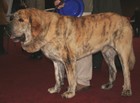



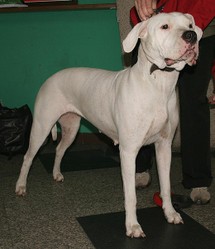

 Crêpes and Crêpe Disheson 09/14/2016
Crêpes and Crêpe Disheson 09/14/2016
 About Me - Liam Beanon 11/28/2014
About Me - Liam Beanon 11/28/2014
 About Ebolaon 11/08/2014
About Ebolaon 11/08/2014
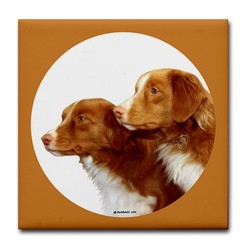
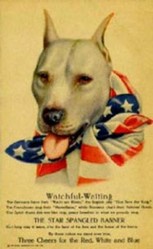
Comments
Thanks Kat. This one is pretty amazing. The brother's had it tough. Antonio and a friend were murdered during a bird hunting trip. To this day no one knows who killed them. The supposition is that it was a robbery gone wrong. Unfortunately, Antonio had not taken a Dogo with him.
Then, after the Perón period with Argentina under marshal law, Augstin was imprisoned for some "political crime." Much of the public abandoned or got rid of their Dogos fearing an implied support for Agustin. Once released from prison Agustin had to starting working with the breed again, almost from scratch.
I love dogs and have always been interested in how unique breeds are designed or created. :)K